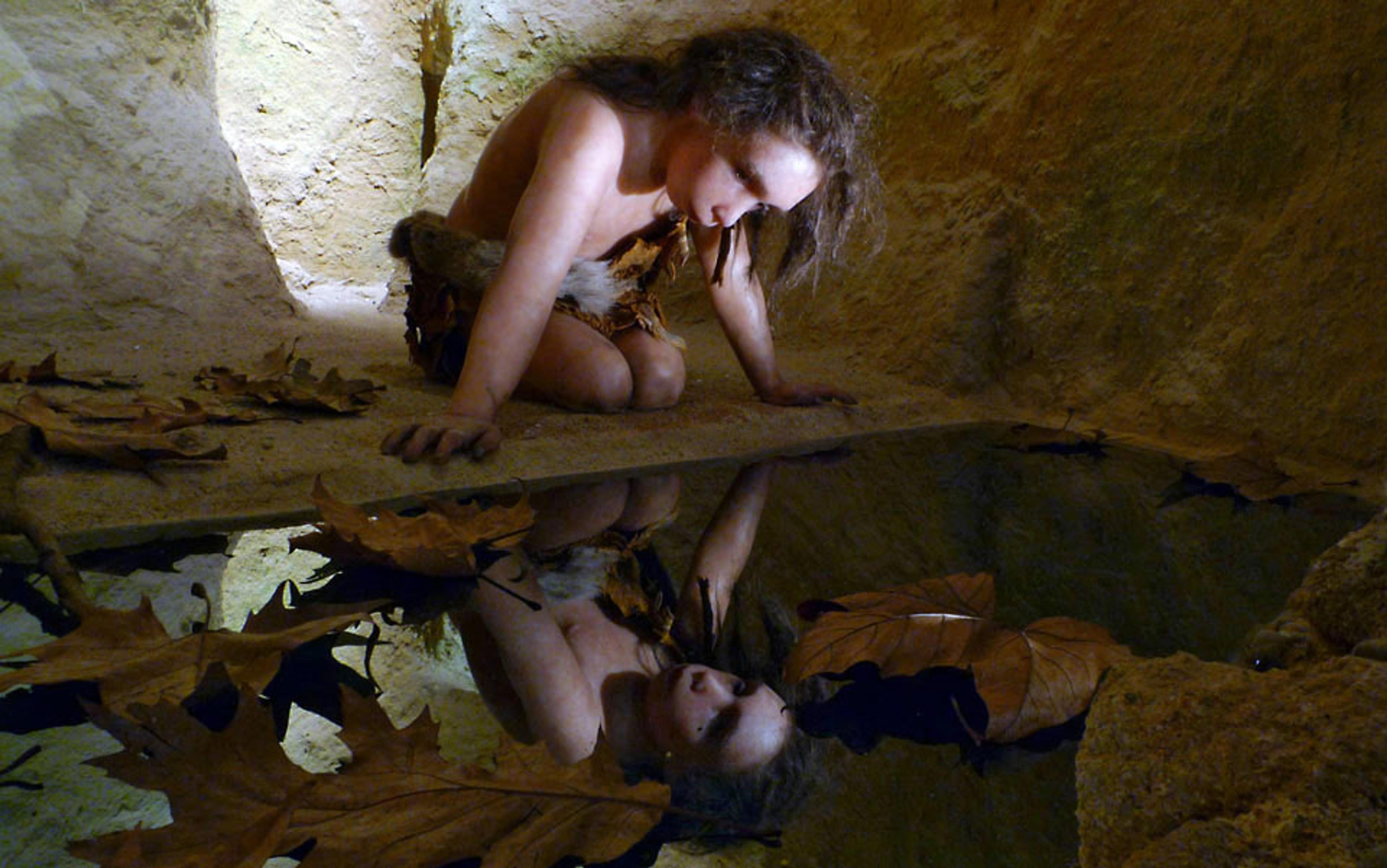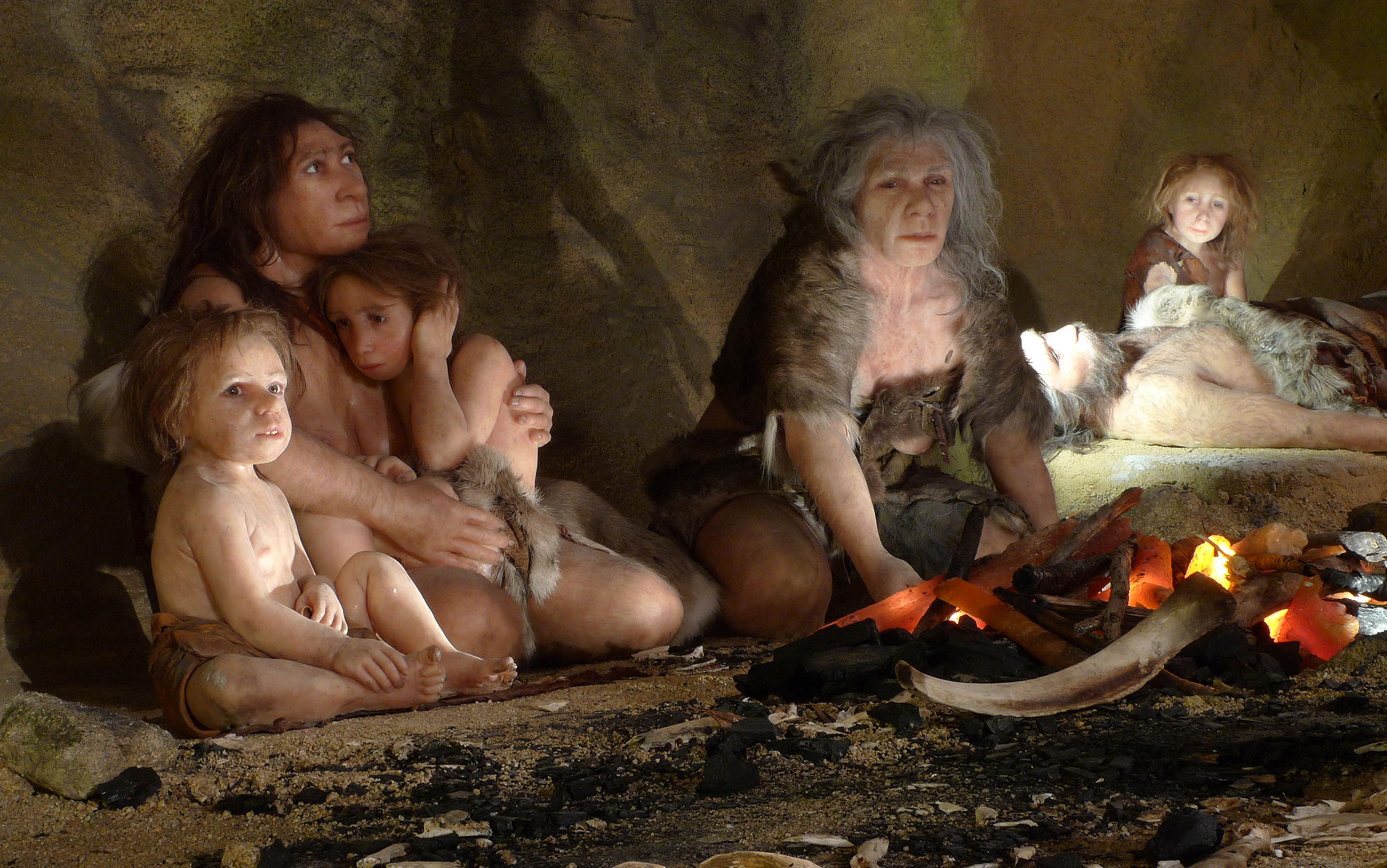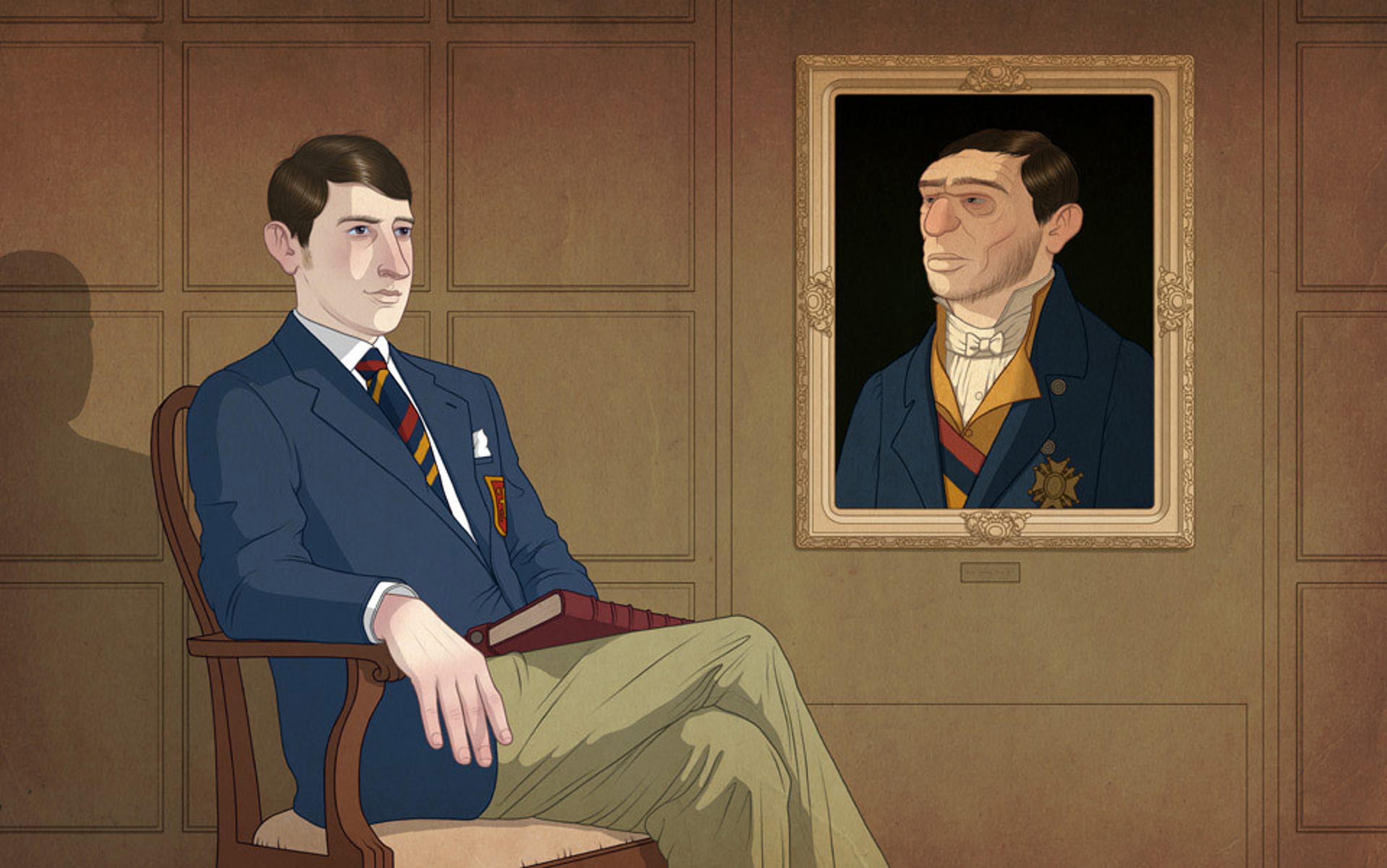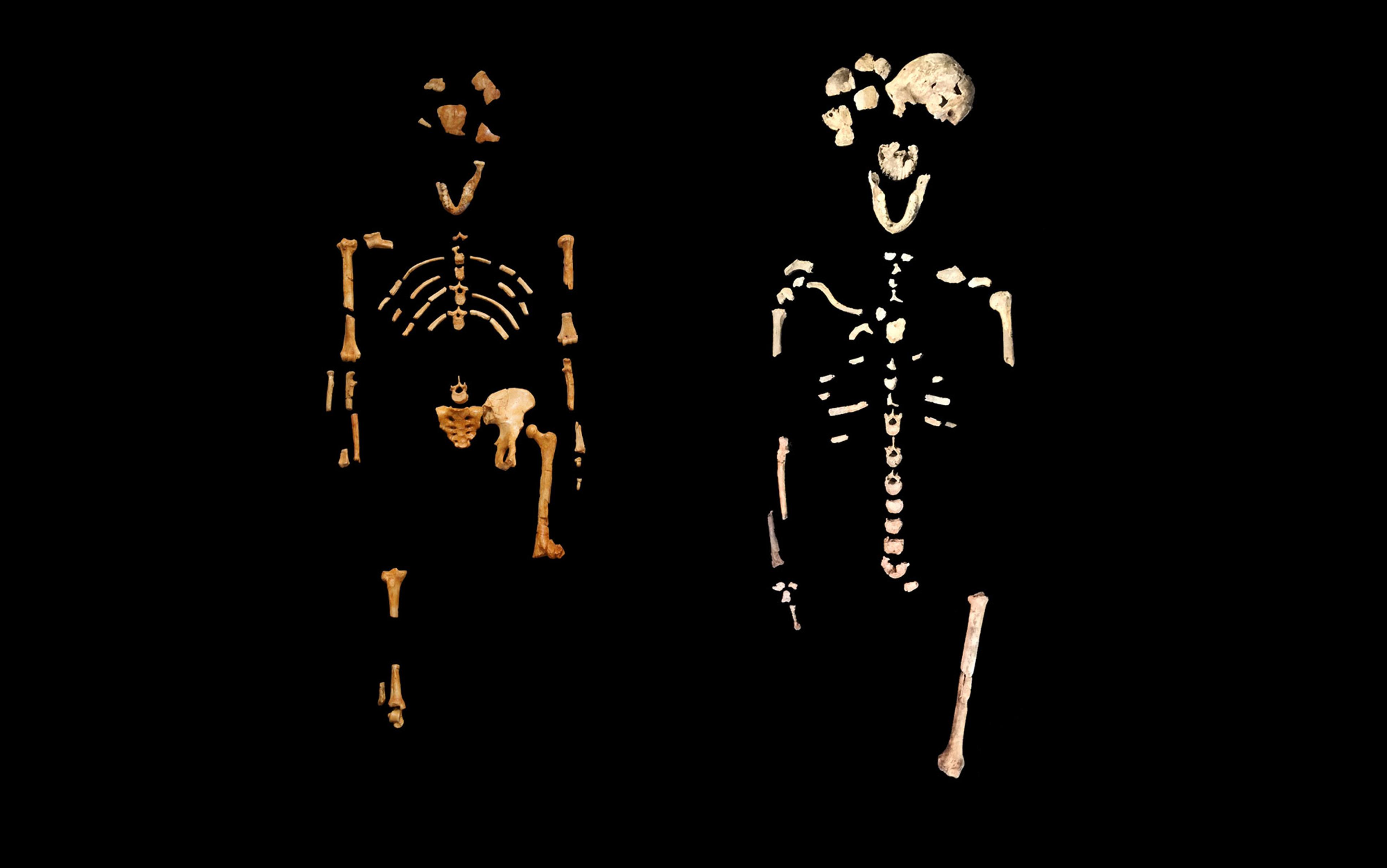Among the oldest human objects that unequivocally defy practical explanations are shells punctured with holes. Try as you might, it’s hard to see them as anything other than beads or pendants. Traces of ochre at sites occupied by ancient humans offer earlier hints of adornment, perhaps even of symbolism, but sceptics argue that the pigment might have been used for some practical purpose: tanning hides, for instance. In perforated seashells, however, we find the first truly compelling tokens of expressive humanity.
Early humans must have reached beyond their immediate concerns in many ways that have left no traces. But they did reach for shells very early. Some 75,000 years ago in southern Africa, they gathered and pierced them, perhaps to make bracelets or necklaces. Twenty-five thousand years later and nearly 10,000km away, in what is now southern Spain, others collected naturally perforated shells. Independently and far removed from each other, humans took similar paths into expressive culture. What does that tell us about the human mind?
‘That we’re dealing with the same human mind in both instances,’ said João Zilhão, archaeology research professor at the University of Barcelona. Zilhão is the first author on a 2010 paper announcing the discovery of three perforated shells at Cueva de los Aviones in Murcia in south-east Spain. He and his colleagues also found a half-shell with traces of pigments in it, as if it had served as a paint cup or palette. But Zilhão’s assessment of the cognitive power of his ancient shell-collectors is controversial. While the southern African people were modern humans, anatomically speaking, the ones at Cueva de los Aviones must have been Neanderthals. Neanderthals were the only hominins living in Europe 50,000 years ago; anatomically modern humans did not move in from Africa until thousands of years later. After their arrival, Europe saw an explosion in cultural creativity.
This poses the question of what being anatomically modern means for being human. Were the Neanderthals just stocky northerners with heavy brow ridges, or were their minds built differently as well as their bodies? Were they innately capable of doing what modern humans did? Were they, in fact, us? Bearing, as they do, on the problem of human difference, these questions are sprung with tension. Neanderthals have long been portrayed as brutish, or cognitively inferior to modern humans. Rebuttals of this picture are sometimes referred to as ‘anti-defamation’, not entirely in jest.
To him, that’s like saying ‘people in the Middle Ages were cognitively handicapped because they could not use mobile phones’
Still, if these were all the same human minds, the ones in Europe did not explore their potential as far or as fast as the ones in Africa. The signs of modern human behaviour — beads, ochre, engraved patterns — are much stronger at Blombos Cave in South Africa than at Cueva de los Aviones in Spain. And they are not the the earliest. Shell-beads were collected even earlier in northern Africa, and one found at Skhul in Israel may be more than 100,000 years old. But these are flickering signals, not a steady glow of progress. For tens of millennia, as far as the record shows, modernity came and went. The Aviones Neanderthals might have been leading lives as sophisticated as those of many of their anatomically modern contemporaries.
Zilhão insists that they were. Arguments for modern superiority are often based on anachronistic comparisons between the rich artworks produced by modern humans in Europe and the tenuous earlier hints of symbolism left by Neanderthals. To him, that’s like saying ‘people in the Middle Ages were cognitively handicapped because they could not use mobile phones’. A lot, therefore, comes down to how old various artefacts really are. And this has lately become one of the most controversial fronts in the study of the relationship between Neanderthals and modern humans. Things have turned out to be a lot older than they previously appeared.
The confusion arose because radiocarbon dating is near the limits of its range in the critical period. When living tissue dies, it stops taking up carbon, so the date of death can be calculated from the proportion of naturally occurring radioactive carbon left in it. But after 30,000 years, only about three per cent of the radiocarbon is left, so even a small amount of modern carbon contamination can distort the dating results severely. Just one per cent of contamination can throw things out by as much as 7,000 years.
Using improved techniques, Tom Higham and his colleagues at the Oxford Radiocarbon Accelerator Unit revised a series of key dates for the advent of anatomically modern humans in western Europe. A couple of teeth found in southern Italy in 1964, previously thought to be Neanderthal, were re-scrutinised in the most minute detail and attributed to modern humans. The new dates for the site showed that they were between 43,000 and 45,000 years old. The dates for a fragment of modern human jawbone found in 1927 at Kents Cavern, in south-west England, were pushed back more than 5,000 years, to between 41,500 and 44,200 years ago. Researchers such as Chris Stringer, research leader in human origins at the Natural History Museum in London, used to think that the Neanderthals had Europe to themselves until around 35,000 years ago. Now they are inclined to think that modern humans arrived in western Europe about 45,000 years ago, moving along the Danube from the Balkans and spreading rapidly across the region.
Higham thinks the revisions are nearly complete. ‘We might push the dates back a little bit, but I doubt it very much,’ he said. ‘We’ve looked at most of the sites and the dates seem to be falling into reasonably coherent clusters and groups. The problem for us as dating specialists is at around 50,000 years ago — that’s really the limit of our technique.’ But his team did secure the 50,000-year date that puts clear prehistory between the Cueva de los Aviones shells and modern humans. This provides Zilhão with compelling support for the case that Neanderthals found their own way to symbolism or ornament — that they didn’t just copy the modern human interlopers.
On the other hand, Higham and his colleagues have found evidence that threatens Zilhão’s argument that Neanderthals and modern humans living at the same time were culturally equivalent. In the Swabian Jura region of Germany, along the old line of the Danube valley, there are dramatic signs of a sudden and breathtaking cultural nascence among modern humans — flutes made from swan wingbones and mammoth tusks, ivory figurines with humanoid bodies but heads like lions, the oldest known sculpted female form: art beyond any shadow of doubt or argument. According to Higham’s new figures for one of the Jura sites, Geissenklösterle, that happened 40,000 years ago, or around 5,000 years earlier than previously thought.
Zilhão doesn’t believe it. ‘There is absolutely no evidence at all for any of that stuff being made before 36—37,000 years ago,’ he declared. ‘That’s it. Period.’ Although he thinks the last Neanderthals persisted in Iberia until around that time, contact between them and moderns elsewhere in Europe occurred much earlier. The figurines, he insists, were made 5,000 years after modern human groups had entered that part of Europe and assimilated the Neanderthals.
In the old days, says Robin Dunbar, professor of evolutionary psychology at the University of Oxford, Neanderthals were seen as ‘shambling troglodyte ape-men, with the emphasis on the ape’. Now, he observes, the divide among ‘the Neanderthal folk’ is between ‘those who are very determined to show that they are modern humans, and those who don’t think they’re quite modern human’.
João Zilhão is as determined as anyone to challenge claims, which he traces back to 19th-century beliefs about racial hierarchy, that Neanderthals were innately inferior to modern humans in any way. Dunbar, however, considers that ‘they just weren’t quite in the same league as we were’, and Chris Stringer takes a similar view. ‘I think there is a difference between us and Neanderthals in behaviour,’ he said. ‘It’s not as big a gulf as we used to think, but there is a gap, and that might at least partly explain why Neanderthals died out.’

The last common ancestor of Neanderthals and modern humans probably lived more than 300,000 years ago. The two lineages had accumulated long histories of separate evolution by the time of their final encounters in western Europe. Yet the draft Neanderthal genome, sequenced from the remains of three different individuals found in Vindija Cave in Croatia, adds a twist to this story. Announced in 2010, it contained the revelation that living people of Asian and European descent share from one to four per cent of their DNA with Neanderthals. That suggests a deep (and so far mysterious) history of interbreeding, especially in Asia.
One thing we do know is that Neanderthals differed anatomically from modern humans. Their build was more robust. Their skulls were elongated, compared to the globular modern form. That alone might be significant. Dunbar recently collaborated with his doctoral student, Eiluned Pearce, and Chris Stringer on a study that investigated whether the difference in skull shape reflects differences in the organisation of the brain. The characteristic features of Neanderthal skulls include large eye sockets and a bulging ‘bun’ at the back. As the main area for processing visual information is at the back of the brain, Dunbar wondered whether the two traits might be connected. Just as a larger telescope dish will gather more light than a smaller one, and so will demand more computing power to process the data, larger eyes should work better in low ambient light levels, and will require more dedicated brain capacity to analyse the information they provide. Perhaps Neanderthals had big eyes because they lived under grey northern skies.
When they measured Neanderthal eye sockets and did the brain-capacity calculation, Pearce and her colleagues worked out that Neanderthal group sizes would have been smaller than those of anatomically modern humans
Pearce and Dunbar examined recent human skulls, finding that people whose ancestors lived at high latitudes had bigger eye sockets than people whose ancestors lived closer to the equator. They had bigger brains too, but only to go with their bigger eyes: Dunbar hastened to say that ‘It’s got nothing to do with their smartness at all.’ Then again, Neanderthals had brains the same size as their anatomically modern contemporaries, so if they adapted to the dim north by increasing the proportion of brainpower they allocated to vision, they would have less brain capacity available for other purposes. Their larger bodies would also add to the neural load, since the more tissue a body has, the more nerves and central processing it requires.
As an anthropologist, Dunbar is best known for ‘Dunbar‘s Number’, a figure representing the average maximum number of relationships an individual can meaningfully sustain. It is based on the relationship between the size of the neocortex — the part of the brain whose development is most pronounced in humans — and the size of social groups. A large neocortex allows the brain to process a high volume of social information, and thus to sustain a dense network of relationships. For living humans, the typical maximum is around 150 individuals.
When they measured Neanderthal eye sockets and did the brain-capacity calculation, Pearce and her colleagues worked out that Neanderthal group sizes would have been smaller than those of anatomically modern humans. Calculations based on the size of the brain’s frontal lobes, rather than its total volume, give a figure of around 100 individuals. ‘Neanderthal group sizes are almost identical to those of archaic humans who are our common ancestors,’ Dunbar said. ‘And fossil modern humans have predicted social group sizes that are exactly in line with what we see in living modern humans.’
The evidence from living humans does, however, suggest a note of caution about reading too much into Neanderthal skulls. Dunbar himself collaborated on a study that found women had larger social networks than men, even though their brain volumes were slightly smaller. In other words, the size of the case might not, after all, be a reliable indicator of how the brain inside functions.
In another earlier study, Dunbar found that the size of people’s frontal lobes affects their ability to ‘mentalise’: that is, to form interrelated beliefs about what is going on in the minds of others. As Dunbar has pointed out, Shakespeare’s Othello requires audiences to believe ‘that Iago intends that Othello imagines that Desdemona is in love with Cassio’. That takes them to four levels of ‘intentionality’, or mental representation, but not to an especially compelling story. To bind the narrative spell, Shakespeare has Iago persuade Othello that Cassio reciprocates Desdemona’s feelings. This raises audiences to a fifth level, which is about the natural limit for most people. (In order to tell the tale, Shakespeare himself would have been operating at the sixth level, which is beyond most of us.)
Going by his calculations of their frontal lobe size, Dunbar believes that Neanderthals come out one critical step lower than we do. If the ‘natural mentalising level’ for modern humans is fifth-order intentionality, then ‘for Neanderthals and archaics, it’s fourth-order’, he said. They wouldn’t be able to follow the plot of Othello — and they wouldn’t be able to form groups as large as those of modern humans, because ‘your mentalising ability determines the size of your social network’. That, Dunbar suggests, could have been a fatal constraint in times of ice and turbulent climate. The smaller the group, the smaller the range it would have covered, limiting its opportunities to co-operate with other groups and secure the necessities of survival. And archaeological evidence does indeed appear to confirm that Neanderthal group sizes were smaller, and that they networked across the landscape less widely than modern humans.
In Dunbar’s view, this was a fundamentally cultural weakness. ‘The key importance of the mentalising competence is that it affects lots of things that you can do culturally,’ he said. ‘It’s going to affect things like how complex your stories are, how complex your language is.’
In his book Regenesis (2012), the biologist George M Church looks forward to a time when human cloning is both practical and accepted. At that point, he suggests, ‘the whole Neanderthal creature’ could be resurrected through genome engineering and the use of a chimpanzee or ‘an extremely adventurous female human’ as a surrogate mother. This would ‘give Homo sapiens a sibling species that would allow us to see ourselves in new ways. It might give us an inkling into another form of human intelligence, or of different ways of thinking.’
Church’s cloned Neanderthal is at one turn a creature and at another a sibling species, but never a person in himself or herself. They would be an instrument for modern human self-regard, just as the Neanderthal has been since the 19th century, but in living rather than imagined form. In Church’s view, the reintroduction of Neanderthals would also be an endorsement of ‘true human diversity’.
Neo-Neanderthals would not be capable of playing a full part in pre-electronic societies, let alone the technologically mediated hypersociality that is becoming the new human condition
If the proponents of Neanderthal equality are right, though, neo-Neanderthal children would take up whatever culture they found themselves in, just like other children. They might have some difficulties making themselves understood, if it turned out that their vocal tracts did not enable them to articulate modern human speech clearly, but they would have no difficulties in understanding. Their minds would be modern.
On the other hand, if those who see a cognitive gap between Neanderthals and anatomically modern humans are right, Neanderthal children would face difficulties more profound than those that might arise from looking or sounding different. If Pearce, Stringer and Dunbar’s inferences are correct, neo-Neanderthals would grow up in a social world that was largely beyond them. They would not be capable of playing a full part in pre-electronic societies, let alone the technologically mediated hypersociality that is becoming the new human condition. Adapted only to each other, they would become a marginal tribe without even the memory of traditions to draw on, forced to make what kind of culture they could from the babble around them. Perhaps they might end up sharing a reservation with cloned neo-mammoths.
Neanderthal de-extinction is an indefinite scientific and cultural distance ahead, but the founding data set for such a venture is already in place. The 2010 draft Neanderthal genome has been followed by a much more complete sequence, obtained from a toe bone found in Denisova Cave in southern Siberia. In March 2013 it was posted online by Svante Pääbo, the pioneer of ancient genomics, and his team at the Max Planck Institute in Leipzig.
Denisova Cave has also yielded another ancient genome, this one derived from a finger bone. It appears to represent a previously unknown lineage, a strain of humanity distinct from both Neanderthals and modern humans. ‘I think in the next year or two we will see real high-quality comparisons of those three genomes, pinning down more about what makes us similar and what makes us different,’ said Chris Stringer. With data at this level of detail and accuracy, he believes that ‘we can really start to pin down what it is in the genome that makes a Neanderthal a Neanderthal, a Denisovan a Denisovan, and modern humans modern humans’.
The draft Neanderthal genome has already revealed differences from modern humans in genes that might affect cognition – which highlights an uncomfortable reason why Neanderthals matter so much to us: race. Already one non-scientific account, provoked by George M Church’s remarks in Regenesis, shows how the new genomic image of the Neanderthal could subvert perceptions of modern human unity. A Daily Mail article this January argued that, since up to four per cent of DNA in living people of non-African descent can be traced to Neanderthals, ‘if the Neanderthals did have any useful genes for intelligence, we most likely picked them up and honed them over generations’. The implication that ‘we’ do not include people of African descent, who would lack the full complement of genes for intelligence carried by everyone else, is even more insidious for being an unstated by-product of the argument against human genomic engineering. However it unfolds, the Neanderthal story seems destined to retain its racial undertones.
It will also remain a story pulled this way and that by fragments whose age and scarcity gives them a power out of all proportion to their size. Another tooth, another toe-bone; another twist and another turn. Researchers will continue to draw opposite conclusions from the same evidence. But the pace of discovery and interpretation, of surprise and synthesis, seems to be gathering an unprecedented momentum. Being Neanderthal hasn’t been this exciting for more than 30,000 years.






